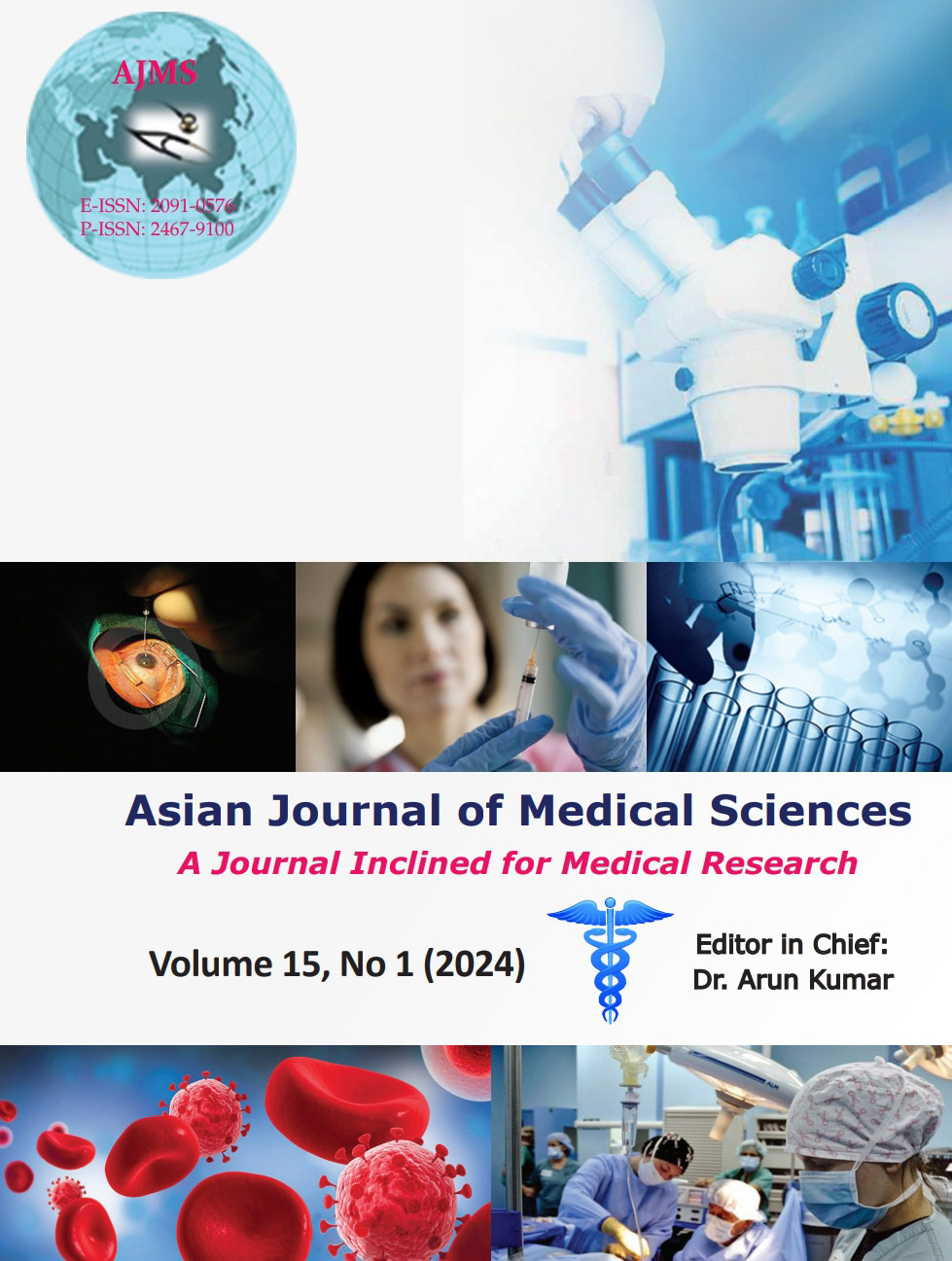Clinical spectrum and management of pseudoexfoliation syndrome: A cross-sectional study
Keywords:
Fundus; Intraocular pressure; Open angle glaucoma; PseudoexfoliationAbstract
Background: Pseudoexfoliation is one of the most common causes of secondary open-angle glaucoma worldwide. The current investigation is being carried out to investigate the clinical characteristics associated with pseudoexfoliation syndrome.
Aims and Objectives: The current study was conducted with the goal of documenting the prevalence of the ocular clinical profile of patterns in patients with pseudo-exfoliative material attending a tertiary
care hospital’s general ophthalmology outpatient department.
Materials and Methods: In the current study, 100 individuals were explored who were diagnosed with pseudoexfoliation and attended the outpatient department of ophthalmology, medical college, and hospital. The Snellen chart for visual acuity was used to test visual acuity. Pseudoexfoliation glaucoma
was identified based on slit lamp examination of pseudoexfoliative material, intraocular pressure (IOP) >21 mmHg, glaucomatous cupping on fundus examination, pigmentation of trabecular meshwork on gonioscopy, and glaucomatous field abnormalities on perimetry.
Results: The age range of 61–70 years had the most cases of pseudoexfoliation, accounting for 23, followed by 51–60 years with 17 occurrences. The current study comprised 48 patients, 20 of whom had bilateral pseudoexfoliation and 28 of whom had unilateral pseudoexfoliation. Our findings revealed that 17 patients had high IOP. We discovered 15 cases of open-angle glaucoma and 2 cases of narrow-angle glaucoma after analyzing 48 patients. The sample of 15 individuals with open-angle glaucoma included 11 men and 4 women.
Conclusion: Pseudoexfoliation becomes more common as people age, and it is often unilateral at first but progressively progresses to bilateral pseudoexfoliation, necessitating frequent follow-up in unilateral cases. Pseudoexfoliation is associated with an increased risk of glaucoma, and the majority of cases have open angles.
Downloads
Downloads
Published
How to Cite
Issue
Section
License
Copyright (c) 2023 Asian Journal of Medical Sciences

This work is licensed under a Creative Commons Attribution-NonCommercial 4.0 International License.
Authors who publish with this journal agree to the following terms:
- The journal holds copyright and publishes the work under a Creative Commons CC-BY-NC license that permits use, distribution and reprduction in any medium, provided the original work is properly cited and is not used for commercial purposes. The journal should be recognised as the original publisher of this work.
- Authors are able to enter into separate, additional contractual arrangements for the non-exclusive distribution of the journal's published version of the work (e.g., post it to an institutional repository or publish it in a book), with an acknowledgement of its initial publication in this journal.
- Authors are permitted and encouraged to post their work online (e.g., in institutional repositories or on their website) prior to and during the submission process, as it can lead to productive exchanges, as well as earlier and greater citation of published work (See The Effect of Open Access).




